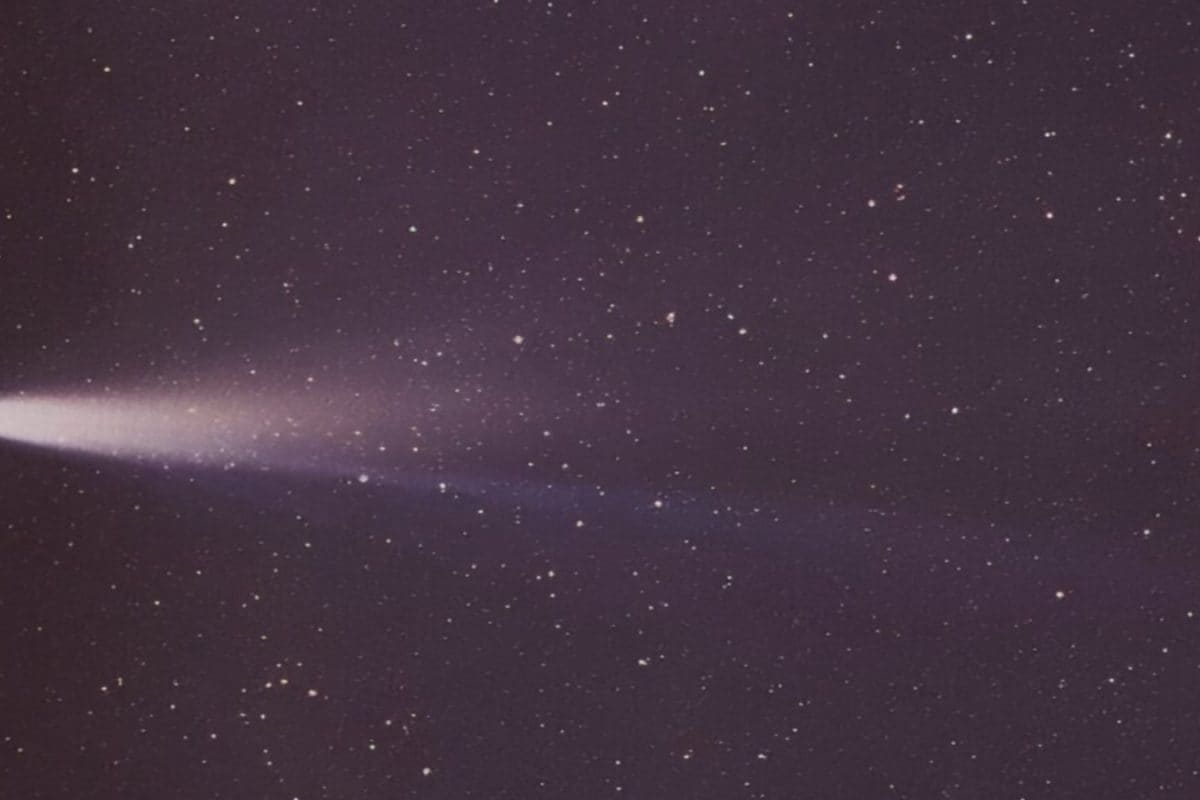

A recent discovery at the Mallikarjuna Swamy Temple in Srisailam, Andhra Pradesh, has brought to light India's first epigraphical reference to Halley's Comet. The inscription, found on a 15th-century copper plate, dates back to June 28, 1456 CE, during the reign of Vijayanagara king Mallikarjuna. This remarkable finding provides insights into the astronomical knowledge and cultural beliefs prevalent in medieval India.
The Archaeological Survey of India (ASI) announced that the inscription is written in Sanskrit using the Nagari script. It mentions the appearance of a comet and an associated meteor shower, celestial events that align with the documented passage of Halley's Comet in 1456. This is the first time an Indian inscription has been found to directly reference this famous comet.
According to K. Munirathnam Reddy, Director of the Epigraphy Branch of the ASI, the inscription records a grant made by King Mallikarjuna to a Vedic scholar named Limganarya. The grant included the village of Simgapura, located in the Kelajhasima region of Hastinavati Vemthe (likely present-day Kadiyapulanka in Kadapa district, Andhra Pradesh). This donation was made "in order to mitigate the great calamity believed to arise due to the appearance of a comet and the associated meteor shower."
The inscription reflects the widespread belief that comets were harbingers of misfortune. The text specifically mentions the desire to pacify the "calamities that may arise due to the illuminating comets and meteor shower upon the king and his kingdom." This fear of comets was not unique to India; historical records from China, Egypt, and Europe also indicate that the 1456 appearance of Halley's Comet was viewed as a bad omen.
Halley's Comet is a periodic comet that is visible to the naked eye from Earth approximately every 75-76 years. Its consistent visibility has made it one of the most frequently recorded comets in history, accounting for about one-eighth of all comet sightings in historical records. The comet is named after Edmond Halley, who correctly predicted its return in the 18th century using Newton's laws of motion.
The discovery of this inscription highlights the sophisticated astronomical observation and recording practices in medieval India. While ancient Indian texts contain generic references to comets, this inscription provides concrete evidence of the observation and documentation of a specific celestial event. It also demonstrates the influence of astronomical phenomena on royal decisions and religious practices. The inscription, found at the Ghanta Mandapam of the Mallikarjuna Swamy temple complex, is part of a collection of 21 unpublished copper plate charters held by the temple authorities.
This finding opens up new avenues for interdisciplinary studies involving epigraphy, the history of science, and cultural astronomy. It also strengthens the understanding of how celestial events were interpreted and integrated into the socio-religious fabric of medieval Indian society. The next appearance of Halley's Comet is predicted for 2061, offering future generations a chance to witness the celestial event that caused such awe and apprehension centuries ago.